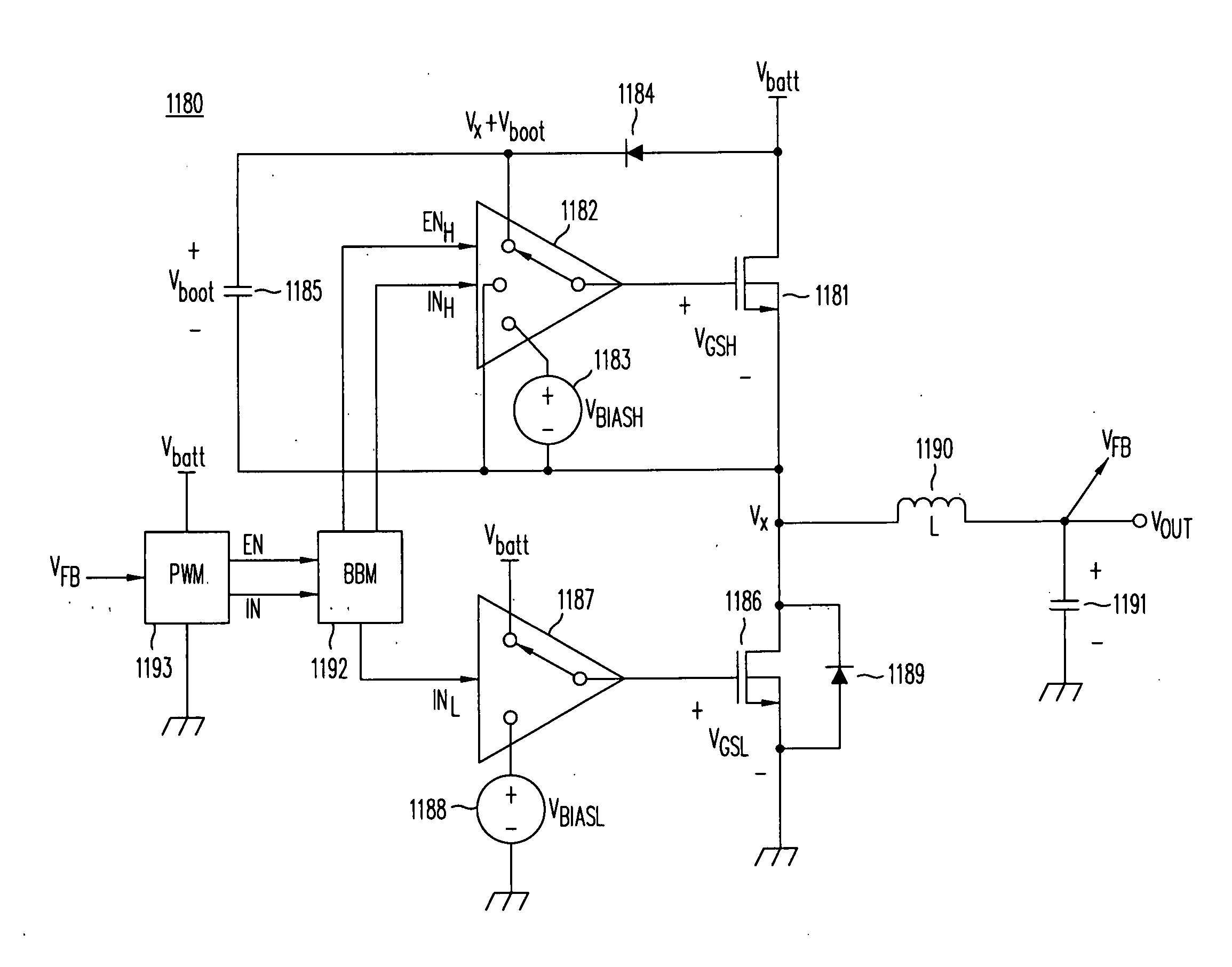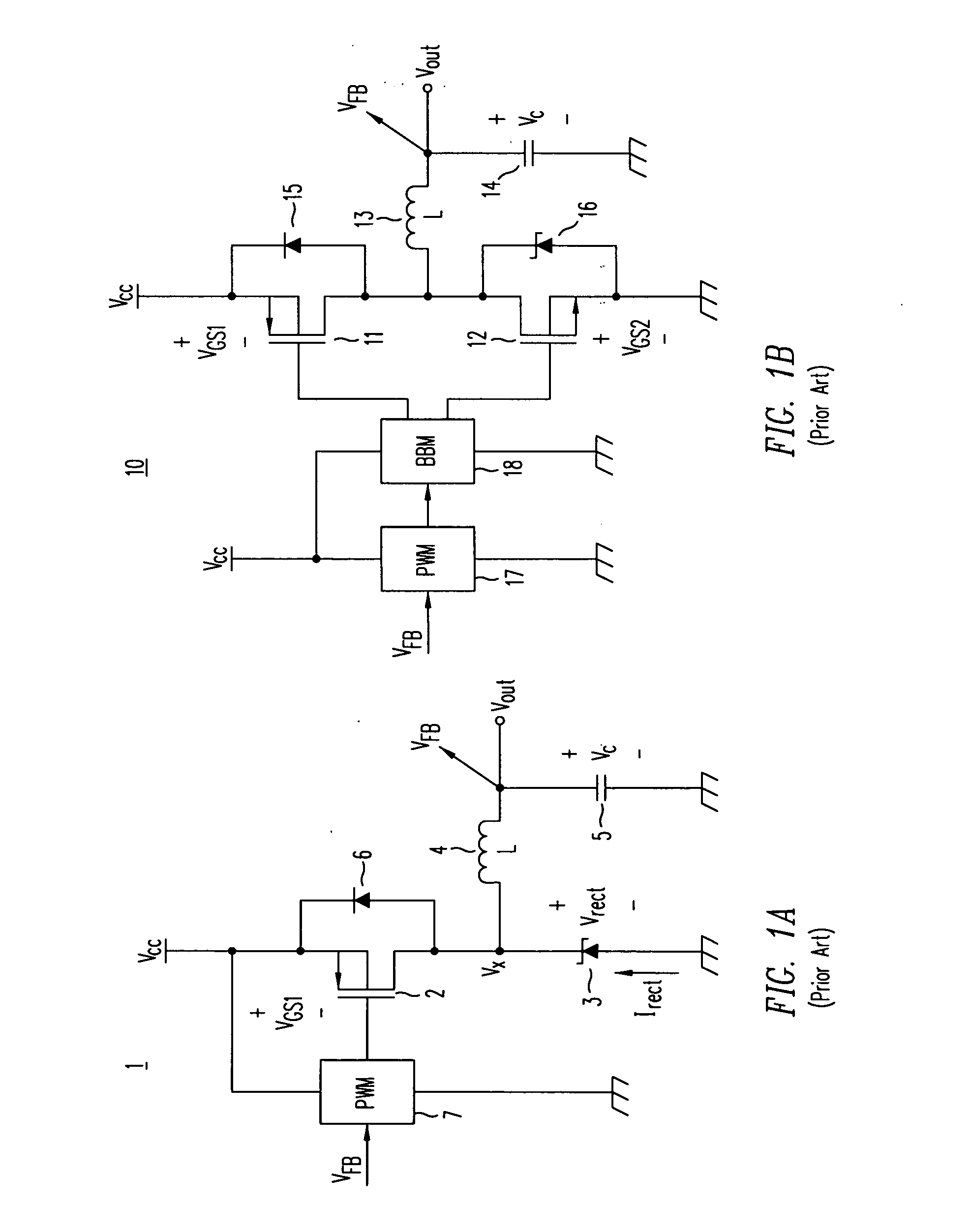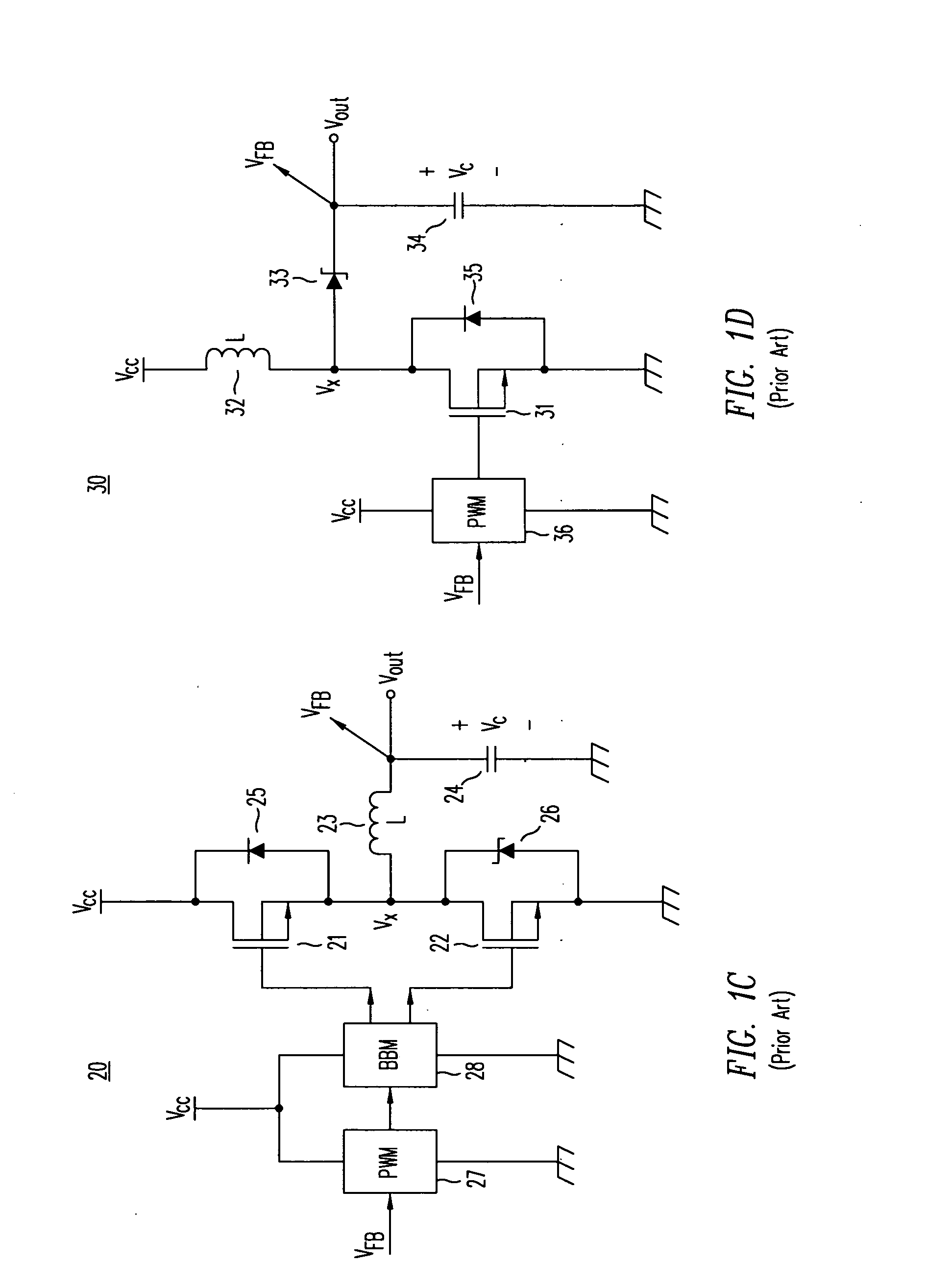MOSFET gate drive with reduced power loss
a technology of mosfet gate drive and power loss, which is applied in the direction of power conversion system, oscillation generator, pulse technique, etc., can solve the problems of reducing the efficiency of the circuit in which the gate drive is employed, affecting the efficiency of the circuit, and affecting the power loss of one megahertz of switching and gate drive, so as to reduce the amount of charge, reduce the power loss of charging and discharging the gate, and improve the overall efficiency of the mos
- Summary
- Abstract
- Description
- Claims
- Application Information
AI Technical Summary
Benefits of technology
Problems solved by technology
Method used
Image
Examples
Embodiment Construction
[0104]While power MOSFET design and manufacturing can be used to optimize or minimize the on-resistance gate-charge product of a device used in a power switching application, power losses can also be minimized by limiting the amount of gate charge moved during each switching transition. This task may be achieved in two ways—by limiting the maximum gate drive to an optimum point or by conserving some of the gate charge during switching transitions. This application discloses a means of preserving some gate charge during subsequent switching cycles.
[0105]One embodiment of this invention is illustrated in FIG. 5, where a circuit 200 illustrates a means of driving the gate of a power MOSFET 203 that controls a load 204. Load 204 may comprise any electrical component connected to supply voltage VDD or an electrical network of components connected to both VDD and optionally to ground or to other voltage sources. The input signal to a gate driver 202 is a logic signal output from a buffer ...
PUM
 Login to View More
Login to View More Abstract
Description
Claims
Application Information
 Login to View More
Login to View More - R&D
- Intellectual Property
- Life Sciences
- Materials
- Tech Scout
- Unparalleled Data Quality
- Higher Quality Content
- 60% Fewer Hallucinations
Browse by: Latest US Patents, China's latest patents, Technical Efficacy Thesaurus, Application Domain, Technology Topic, Popular Technical Reports.
© 2025 PatSnap. All rights reserved.Legal|Privacy policy|Modern Slavery Act Transparency Statement|Sitemap|About US| Contact US: help@patsnap.com



